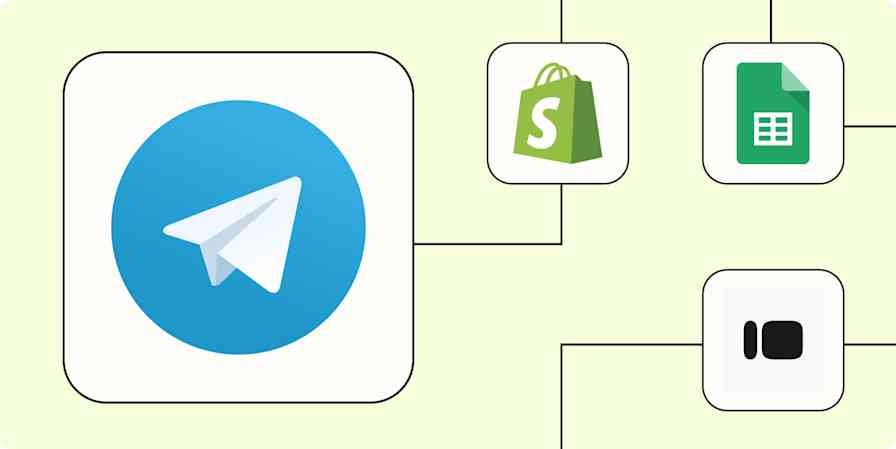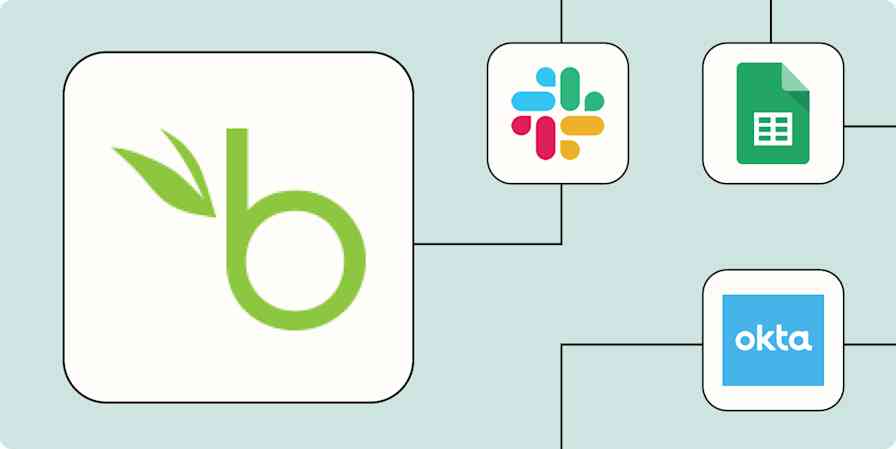When most people start using Zapier, the automations they set up are pretty simple. When this happens in one app, do this in another app.
These kinds of one-off workflows can be big time-savers for a single person or process, but if you stop there, you're missing the opportunity to spread those savings across your entire organization.
For example, say you set up a Zap to alert your sales team when a new lead comes in. Now, your team can see that information immediately and follow up faster. Nice work! But what if you apply automation to your entire lead management process?
You could create a series of workflows that qualify leads, enroll them in email campaigns, alert the sales team to reach out, and send automated follow-up messages—transforming your entire lead management system.
If creating one Zap feels like magic, using Zapier to build complete automated systems feels like hopping off the train for the first time at Hogwarts. Let's climb aboard and learn how to do it.
New to Zapier? It's workflow automation software that lets you focus on what matters. Combine user interfaces, data tables, and logic with 6,000+ apps to build and automate anything you can imagine. Sign up for free.
Use Zapier to build customized, company-wide workflows that grow with you
It's probably pretty easy to come up with a handful of one-off tasks you could automate to save yourself time. But you might be a little stuck when it comes to building out automated systems that impact more than just your personal workflows.
To understand if a cross-team workflow could be done more efficiently, try mapping out the entire process, then documenting how each step works.
While writing it out, are you constantly having to explain manual interventions like "sales rep uploads new leads to CRM" or "create a reminder to follow up in X days?" Those pesky manual tasks are where the magic happens.
With Zapier, you can use automation to remove the messy workarounds from your processes. Instead of your team having to manually fill in the gaps where your tech stack falls short, Zapier does it for you automatically.
Prioritize reliability and security
No one doubts that automation is a powerful tool. Sometimes, though, companies are reluctant to use it—or only give access to a few IT people—because of security concerns. What if Will from marketing accidentally deletes all of our Salesforce contacts or sends an email to the wrong list?
That's why top-tier security features are so important in an automation tool. With Zapier, admins have control over the permissions and access that each user has, so IT can set up the necessary guardrails to stop Will from marketing from compromising company data. They'll also get custom alerts any time a Zap breaks and AI-assisted troubleshooting guides to help fix it.
Automating is only worthwhile if you can trust that the job will get done properly. With a suite of advanced security features, your IT team can rest assured that your data is safe, while still enabling teams to build the workflows they need.
Use Tables and Interfaces to do even more
When you're automating entire processes, it helps to keep as much of it as you can on one platform. That's why we released a suite of new, automation-first tools that you can use to build and customize your workflows without having to leave Zapier.
Zapier Tables is our database tool designed with automation in mind. And Zapier Interfaces is our no-code app builder that lets you collect, manage, and automate your data.
How do you use these two tools together? Say you typically use a website builder, a form app, and a spreadsheet tool to build a customized lead capture system. You can use a Zap to connect these apps together, saving loads of valuable time moving information from one tool to another. But you'll still need to jump between tools when creating, customizing, and maintaining your system.
With Zapier workflows, Tables, and Interfaces, you can build a fully customizable lead capture ecosystem in one tool, skipping the jumping back and forth between apps. Plus, steps using Tables and Interfaces are free and don't count toward your Zapier task limit.
How to use Zapier across your company
Zapier integrates with thousands of apps, so you can automate almost any task across any team.
But when there are so many options, it can be hard to know where to start. Here are some popular ways automation can streamline operations across different departments in your organization.
Marketing: Use automation to streamline lead management
Ask any marketer why they got into their field, and I can almost guarantee you no one is going to mention pulling metrics from different platforms or inputting lead data into a CRM. Yet somehow, those are the tasks that end up taking up a huge chunk of your time.
Doing this manually can easily lead to errors, as well, since typos and little mistakes are unavoidable when copying and pasting data by hand.
By adding automation into the mix, you can not only do these things more quickly and reliably, but you can also give time back to your team to let them focus on creative work, strategic thinking, and collaborating. You know, the stuff only they can do.
Here are some examples of marketing teams that are using automation to grow their business:
How Orchard provides great customer experiences with automated lead management
How customized automation streamlines Lucidchart's reporting and lead management
How this marketing company tracks lead data for clients in real time
Sales: Boost revenue by automating your sales pipeline
For sales teams, any time not spent working leads is time lost. For sales leaders, one of the most impactful aspects of their jobs is to make each rep's process as smooth and efficient as possible.
This is a major challenge given the number of tools in the modern-day tech stack. Lost time due to admin work may feel unavoidable—but automation can change that.
Adding automation to these key processes can unlock more time for reps, helping them be even more effective at closing leads:
How Smart Charge America uses automation to scale operations and fight climate change
How Veo increases sales and lowers lead costs with automation
RevOps: Align your go-to-market tools
Revenue operations (RevOps) exists to empower every team involved in your go-to-market efforts by making sure processes run as smoothly as possible. A big part of that job is making sure all of the tools in your tech stack work together—but native integrations don't always play
That's where Zapier comes in. Successful RevOps teams automate with Zapier to fill in the gaps where native integrations fall short—creating more customizable, flexible workflows that piece together your fragmented tech stack.
Here are some examples of how they're doing it:
Business operations: Boost retention by creating a better customer experience with automation
Business leaders are tasked with getting the most out of the resources they have, and nothing does that better than automation. Not only does a tool like Zapier help you get the most out of the tools you already use by connecting them all, but it also helps you get the most out of your people. By automating large-scale processes, you can get a lot more done without needing to add additional headcount.
Here are some examples of businesses that have transformed their operations and created better experiences for their customers with automation.
How a nonprofit built a custom application process on Zapier
How ActiveCampaign slashed its 90-day churn rate as low as 6%
How Hudl uses Zapier to create a seamless customer experience
Customer support: Reduce customer churn by adding automation to your support processes
Customers crave more consistent, reliable, and personalized experiences from support teams. You might think that automation is the opposite of a more personalized experience, but when done right, it can provide exactly what you and your customers are looking for.
Between automating ticket creation, notifying reps, and using AI to provide additional personalization at scale, Zapier can help you make your support more human than ever.
Here are some ideas on how to do it:
Human resources: Save time by automating the busy work
Like sales and support, human resources teams are at their best when they're doing the human parts of their jobs—like interviewing, following up with recruits, and doing everything they can to roll out a great employee experience.
Taking the administrative work out of processes like onboarding, interview scheduling, and job posting will give your team more time and energy to focus on what's most important—the recruits and employees.
Check out these examples of how to enable your HR team with automation:
Scale automation and scale your business
Automating small, simple tasks is great, and can be a huge time-saver on an individual level. But when you start to consider the systems and large processes you can build with an automation tool like Zapier, that's when you'll start to discover the impact that automation can have on setting up your business to scale.
New to Zapier? It's workflow automation software that lets you focus on what matters. Combine user interfaces, data tables, and logic with 6,000+ apps to build and automate anything you can imagine. Sign up for free.






